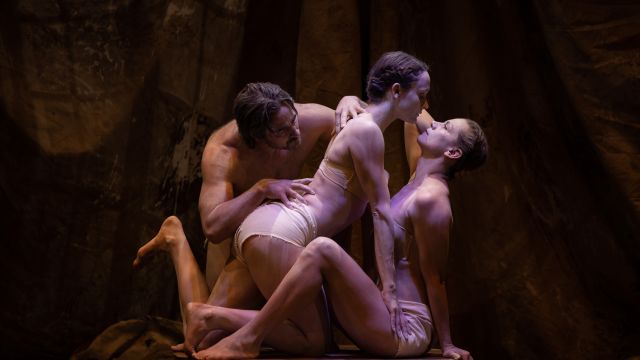Claudel
Australian playwright Wendy Beckett’s tribute to twentieth century French artist Camille Claudel premiered in French, in Paris, at the Théâtre de l'Athénée Louis Jouvet in 2018 in the midst of the #MeToo movement.
Think about it! An Australian playwright dramatizing the work of a famous female French artist, but one who was terribly ill-used by the society of the time. How did the critics react, I wondered? Here are just a few snippets of what they said:
A piece all powerful in its subtlety … (Publik Art Review)
A superb show dedicated to the life of this great artist, so unfairly treated. (De La Cour au Jardin)
The show is ambitious: exploring the delicate balance between genius and madness. (Coup de Theatre)
This Australian premiere of her play is just as powerful and just as subtle.
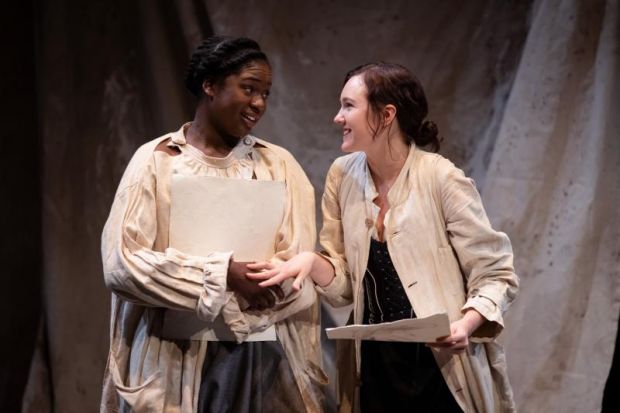
Not only does she explore the “delicate balance between genius and madness” that Claudel trod so impulsively, but she reincarnates the intriguing, gutsy woman who wrought a career as a highly original sculptor at a time when women weren’t usually allowed into studios. A woman who became the muse and lover of the famed Auguste Rodin. And who, despite her talent and fame, was despised and defamed by her own mother, who had her committed to an asylum where she died, incarcerated, 30 years later.
Beckett’s reconstruction of Claudel’s story is skilfully written. It covers so much, but does so in spare, pared back dialogue that gives the actors the opportunity to disclose the characters in action, expression and gesture as well as words.
Meryl Tankard’s choreography is just as skilful and equally as subtle. Based on Claudel’s own work, three dancers using almost imperceptively controlled movements, recreate the intricate work of the sculptor to the haunting notes of excerpts from Olivier Messian’s Quartet for End of Time.
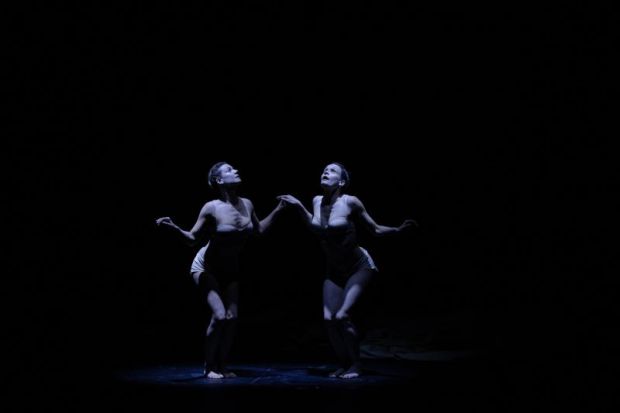
Sensitivity is evident in both the direction and the choreography. The cast – actors and dancers alike – have a serious story to tell. They do so with perceptive intelligence, restraint, clarity and control.
Imogen Sage inhabits Camille Claudel like a feisty spectre from a past where an outspoken woman was shunned. Claudel was sensitive, highly strung, fighting for recognition in a chauvinistic society. Sage finds all the different dimensions Beckett’s research has infused into the character. She is defiant, a little brazen, mischievous – but always creative, intense, ambitious. In her relationship with Rodin she moves from admiration, to affection, to love, to despair. In isolation, she is reduced but still defiant.
Auguste Rodin is reincarnated by Christopher Stollery, who plays the eminent sculptor with haughty arrogance and a tinge of humility. Stollery treads the stage confidently, giving Rodin the self-assurance of success and recognition – and the chutzpah that enables him to see, ruthlessly at first, the value that can be gained from Claudel’s talent and insightfulness.
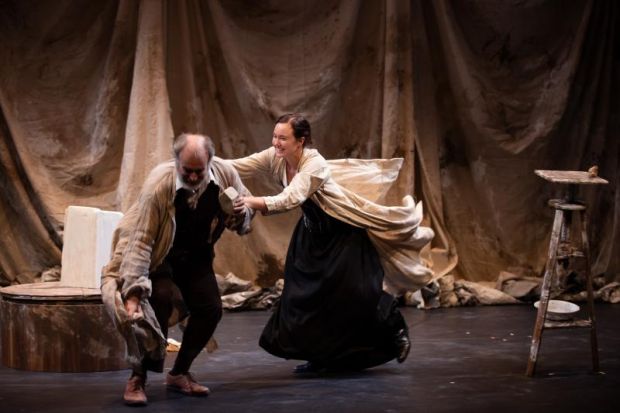
Tara Morice plays Madame Claudel, a callous, pitiless woman entrenched in the moralistic society of the time. Morice finds the rigidity of this woman, holding her head as tautly as the impossible constraints she inflicts on her family. She is cold, tense, inflexible. There is nothing soft or yielding in the character she portrays so clearly.
Claudel’s friends and fellow students, Jessie and Suzanne, are played by Melissa Kahraman and Henrietta Amevor. Both depict the mixture of enthusiasm and anxiety of working in the only studio in Paris that allowed female artists. Kahraman’s Jessie is bubbly, excitable, supportive, yet always a little nervous. Amevor’s Suzanne is less open, more cautious.
Mitchell Bourke is Paul Claudel, loyal brother, yet dutiful son. Bourke shows the difficulty of being caught between both roles. He is fretful, apprehensive, concerned.
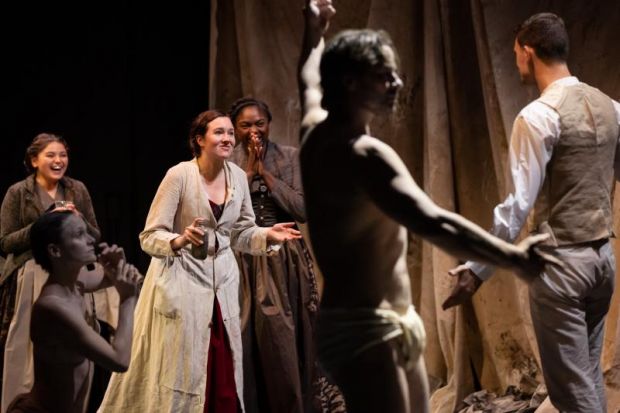
Dorothea Csutkai, Chloe Fournier and Kip Gamblin are the dancers who bring Claudel’s sculptures to the stage. Clay-coloured, they pose, often immobile for long minutes at a time, then moving, almost imperceptively, to another of Claudel’s innovative interpretations of the human predicament. Tankard uses the famous L’Age Mur (that depicts the struggle between Claudel, Rodin and Rose, the mother of his son), to bring the dancers into an even more poignant depiction of her work. In the final moments of the production, as Claudel languishes in isolation, the dancers come together and draw away, just as Claudel was drawn away from society and her work.
All of this is portrayed on a set clothed in swathes of clay-coloured fabric that swaddle the stage, and lighting that suggests the stulted ideals of times past. Similar clay-ish shades are used in the long artists’ smocks, so that Claudel’s vivid red velvet dress in a later scene, and her mother’s black gown and white collar are emphatic contrasts. Unusual props – a stretchable bust, the frame of a coffin – extend the artistic essence of the story. The design team – Halcyon Pratt, Sylvie Skinazi, Matt Cox and Bob Scott – has created an atmosphere that reaches beyond the stage.
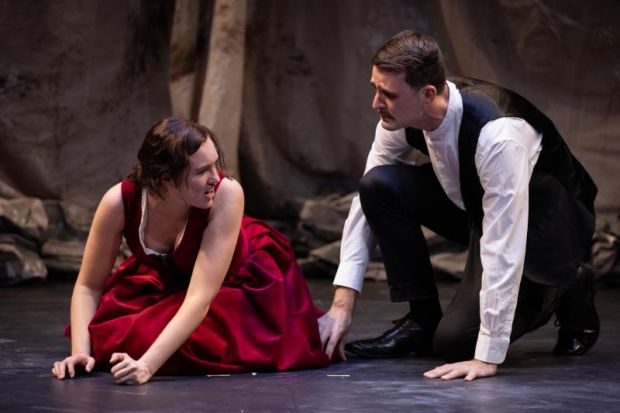
Camille Claudel lives on in this sensitive yet harrowing retelling of her ideals, her work and her cruel mistreatment. It is an acknowledgement of a woman wronged – brought to the stage by a talented artists who empathise, over the distance of time, with a woman who was so sadly wronged but who lives on in the works she created.
Carol Wimmer
Photographer: Daniel Boud
Subscribe to our E-Newsletter, buy our latest print edition or find a Performing Arts book at Book Nook.

